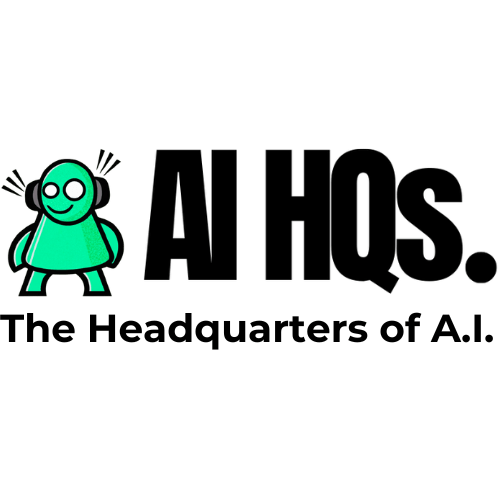JobGPT – 5000 Job Applications in minutes
In the dynamic world of job hunting, the quest for the perfect position often feels like an uphill battle. The saga of software engineer Julian Joseph’s encounter with automation and the subsequent rise of AI-powered job application services serves as a compelling narrative, offering insights into the challenges and opportunities that define today’s competitive job market. As we embark on a deep dive into this evolving landscape, we unravel the nuances, dilemmas, and potential transformations shaping the future of job hunting.
The Chronicles of Job GPT: A Beacon of Hope or a Double-Edged Sword?
July witnessed the unfolding of Julian Joseph’s professional journey, marked by the unsettling experience of facing a second layoff in as many years. Faced with the prospect of another round of laborious and repetitive job applications, Joseph discovered LazyApply and its game-changing service, Job GPT. This AI-powered tool promised to streamline the application process with a single click, sparking intrigue and raising questions about the efficacy and impact of such automated solutions.
As Joseph invested in a lifetime unlimited plan and integrated LazyApply’s Chrome extension into his job search arsenal, the bot set out on a mission to apply to thousands of jobs on his behalf. The efficiency of the tool was evident as it navigated through platforms like LinkedIn and Indeed, targeting roles that aligned with Joseph’s skills and preferences. The promise of time-saving and increased application volume fueled Joseph’s decision to extend the automation to his boyfriend’s laptop, resulting in a frenzy of applications.
Despite the allure of efficiency, the tool was not without its imperfections. Job GPT, in its brute-force approach, often resorted to guesswork in answering application questions, leading to occasionally confused results. Joseph’s experience reflected a hit rate of about half a percent, a dismal success rate when compared to the 20 interviews secured through manual applications to 200 to 300 jobs. However, the time saved by Job GPT prompted Joseph to view it as a worthwhile investment, allowing him to reclaim some of the power seemingly ceded to companies over the years.
The dichotomy between quantity and quality in the job hunt became apparent, with recruiters expressing skepticism about candidates relying on AI-driven tools. Christine Nichlos, CEO of a talent acquisition company, highlighted concerns that using such tools might signal a lack of seriousness about a job. The tension between the convenience of automation and the perceived commitment of candidates adds a layer of complexity to the evolving job search landscape.
LazyApply is not the sole player in the arena of automated job applications. Competitors like Sonara and Massive offer variations of automated services, with some incorporating human elements to enhance personalization. The narrative expands into a competitive landscape where traditional job search methods are being challenged by the rise of AI-driven solutions. The implications of this shift are multifaceted, prompting job seekers and recruiters alike to reevaluate their strategies.
While the allure of casting a wide net through automation is understandable, recruiters like Emi Dawson emphasize the enduring value of a personalized and focused job search. Dawson contends that for established professionals, it is the quality of applications that matters, underscoring the timeless importance of networking and referrals in the hiring process. The clash between the numbers game and a targeted approach becomes a central theme in the ongoing discourse.
As the popularity of auto-apply services grows, concerns about spamming and potential countermeasures from applicant management software providers come to the forefront. The risk of being identified as a spammer in the pursuit of efficiency adds a layer of complexity to the evolving dynamics between job seekers and recruitment technologies. The narrative unfolds into a cautionary tale, urging a balance between efficiency and the unintended consequences of mass applications.
The struggle to match the right candidate with the right job remains a persistent challenge. While AI-driven tools aim to simplify the process, challenges in accurate matching persist. Companies like Massive are actively addressing the matching problem by aggregating data to enhance the job search experience. The call for more focused AI tools and a specialization in certain industries becomes apparent as the quest for a more streamlined hiring process continues.
Amidst the wave of automation, the human experience remains a crucial factor. Personal anecdotes, such as Julian Joseph’s journey, highlight the nuances and unexpected outcomes of relying on AI for job applications. The blend of human connections, learning from imperfect matches, and leveraging AI as a tool in a diverse arsenal emerges as a balanced approach to the modern job hunt. The narrative expands to explore the intersection of technology and the human experience, revealing both the promises and pitfalls of the ongoing revolution.
As we delve into the era of AI-driven job applications, the key lies in striking a balance between automation and the human touch. While efficiency is sought after, the effectiveness of personalized approaches, networking, and targeted searches remains undeniable. The blog unfolds the complexities, challenges, and potential solutions in the ever-evolving journey of job hunting in a tech-driven world.
In the face of evolving technologies and changing dynamics, job seekers are left to navigate a landscape where efficiency and effectiveness coexist. The story of Shikhar Sachdev’s quest to apply to 250 jobs sheds light on the time-consuming nature of online applications and the role of applicant tracking software in shaping the experience. The need for wisdom and precision in the job hunt becomes a central theme, urging individuals to navigate the complexities with a nuanced approach.
As the job market continues to evolve, the blog serves as a comprehensive exploration of the challenges and opportunities that define the current landscape. From the rise of automation to the enduring value of human connections, the narrative weaves together the threads of modern job hunting, offering insights and reflections for both job seekers and recruiters alike. In a world where change is the only constant, the quest for the perfect job remains an ever-evolving journey, demanding adaptability, resilience, and a strategic blend of technology and human touch.








